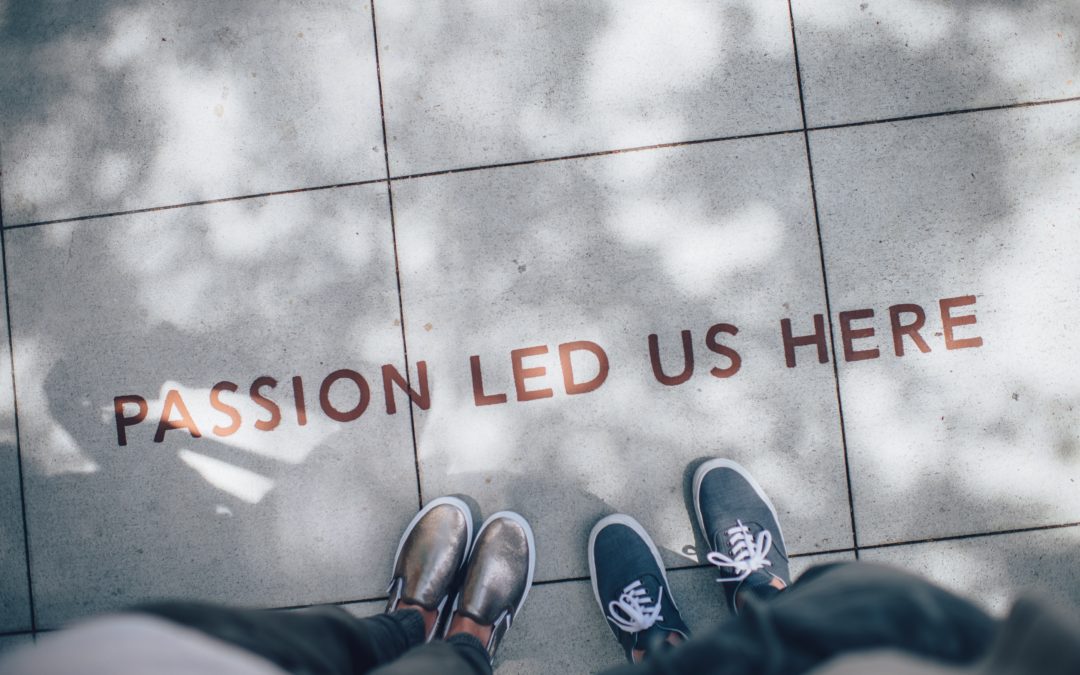
by Robyn Bolton | Aug 26, 2020 | Customer Centricity, Tips, Tricks, & Tools
“When you say, ‘uh-huh’ over and over like that, I can tell you’re not listening to me.”
Me, age 7, to my mom
It doesn’t take a lot of experience to know when someone isn’t listening. From a young age, we can tell when someone is listening and when they’re simply responding.
When we’re with the person, we notice the lack of eye contact or the blankness in their eyes showing us where their thoughts are actually at. When we’re on the phone, we hear the repetitive and monotone mumbles that tell us they’re attention is elsewhere.
Yet often, what we want most is simply to be listened to.
This is true in our personal relationships and in our relationships with the businesses and organizations we support. We want people and businesses to listen to our opinions, to understand them, and to thoughtfully respond to them.
Instead, people and businesses simply “hear” us.
There’s a big difference between listening and hearing
According to the Oxford University Press, hearing is “the faculty of perceiving sounds” while listening is “give one’s attention to a sound” and “take notice of and act on what someone says.”
As I explain to my clients, surveys, focus groups, and even in-depth qualitative research is often a Hearing exercise – the company develops a list of questions, asks their customers to answer the questions, then tabulates the answers and passes them along to whoever needs them.
This is a transaction. An exchange of information. It is not listening.
Listening requires engagement. It happens during EPIC conversations, those typified by empathy, perspective, insights, and connection.
Listening accelerates innovation and drives transformation. When we’re listening, we’re learning new information and discovering new insights, which enables companies to create and act differently, differentiating themselves from the competition and ultimately gaining an advantage.
Listening takes practice but here are 5 simple steps to help you get started:
- Drop the agenda – Before you have a conversation within someone, identify the 1-3 things you need to learn and leave space for at least 1 surprise. If you go into a conversation with an agenda or a long list of questions, you’re only going to hear what you want to hear because your mind is primed to seek confirmation for your opinions and to reject anything counter to what you’re hoping to hear.
- Follow where they lead – During the conversation, don’t worry about trying to steer the conversation or “keep things on track.” If you only need to learn 3 things in the conversation and you have 30 minutes or an hour, you have plenty of time for tangents, stories, and random connections. This is where the surprises and the insights come from.
- Ask Why – Channel your inner two-year-old (or Toyota Production employee) and ask “Why” multiple times. When you ask “Why” you get personal, surprising answers that point to the motivations behind people’s choices and actions. When you ask “What” you get rational, expected, even obvious answers that you, and your competitors, have heard before.
- Say as little as possible – Follow the 80/20 rule and spend 80% of your time listening. When you ask a question, don’t go into a long pre-amble about why you’re asking it or follow it with a long list of options or examples. Simply ask the question and the answer will come.
- Let the silence work for you – After you ask a question, start counting silently in your head. Before you get to 8, the person you’re listening to will start talking. Silence makes people uncomfortable but it’s also when the brain goes into exploration and discovery mode. And the longer the silence goes on, the faster the brain works to come up with something to fill it. So, stay quiet and let the brain work!
Whether you’re talking to a customer, a colleague, or a friend, you’re talking to someone who wants you to listen, to hear and understand what they are saying. These 5 tips will help you do that and, if done well, discover something wonderful and unexpected with the power to transform.
Originally published on April 20, 2020 on Forbes.com

by Robyn Bolton | Apr 20, 2020 | Innovation
“What happens next? You know, once all of this is over?” my friend asked. “There will be a new normal, but what will it look like?”
This is the question everyone is asking.
Lots of people proclaim to have the answer. Some are based on history, but history isn’t a great predictor of the future. Some opinions are based on trends and projections but rely assumptions which may or may not be true. Many are based on our hopes or fears, but those are grounded in emotions which can change from one moment to the next.
No one actually has the answer.
What we’re experiencing is a fundamental disruption to our way of life. It calls into question everything we believed to be true about ourselves and our worlds. It requires us to re-think things that we took to be inviolable truths. It is impossible to experience such a sudden and all-encompassing upheaval and emerge as if nothing happened.
We know things will be different once the restrictions (e.g. stay-at-home, limited gathering sizes, essential workers only, curfews) are lifted.
What we do not know is HOW they will be different and HOW LONG they will stay different.
I certainly don’t and that’s a terribly frustrating feeling. After all, I’m the person who reads the last page (or chapter) of a novel before I read the first because I want to know who is still alive and whether the ending is happy or sad. So, as you can imagine, I’m impatient to get at least a hint of what comes next.
Happily, there are ways to get that hint: Be curious, ask questions, seek input from a wide variety of sources, and observe how things progress.
Here are the questions I’m asking:
How will connection be different?
History says we’ll grow further apart. During pandemics, people choose, or are forced to, separate from one another, to stay at home, and to minimize contact with the outside world. Pandemics also highlight economic and social inequalities, disproportionately impacting the poor and working poor and inflaming class divisions. After the crisis passes, people remain wary of others and physically and emotional exhausted from the experience. They don’t want to re-live it by talking about it or, even worse, reflect on who they became during the experience.
OR…
We’re more connected than ever as the internet, social media, and video conferences make this a shared experience on a global scale. Yes, there’s a lot of crap on social media and Zoom-bombing isn’t helping things. But social media is also spreading good news — videos of people in Italy singing together and playing Bingo, people in various cities applauding healthcare workers, parades as substitutes for parties. Zoom, FaceTime, Google Hangouts, and similar services enable us to see the people we’re talking to, engage in the conversation (because it’s hard to multi-task on camera), and connect in deeper and more effective ways than we could by phone or email.
I HOPE that…
Connection takes on deeper meaning, that we’ll care more about the quality of our connections than the quantity and, as a result, invest more time with the people we care about than we do in generating likes and followers.
Gratitude continues to be part of our daily social interactions, that we say, and mean, “thank you” to the people working in healthcare, retail, restaurants, delivery, and other essential businesses.
Empathy remains a part of how we think and act because we have all shared an experience of great uncertainty, witnessed how fragile our lives and lifestyles are, and realized that we actually are all in this together.
How will work be done?
People will return to the office because they have grown tired of staying in their homes, relying on technology for virtual meetings, and having their calendars filled with meetings that were once hallway conversations. Offices are suddenly a welcome respite from the home because they are purpose-built for work, establishing physical definition between our work and personal selves, enabling direct human interactions, and creating an environment where connections between people and between ideas effortlessly occur.
Or…
More people will work from home because they value the flexibility and control it offers. Employers will have a hard time arguing that physical presence in the office is essential for most jobs when people have been working remotely for over a month. And those employers that do mandate a return to the physical workplace risk sending the message that they don’t trust their employees which could, in turn, result in employees leaving for a different employer that does trust and respect them as adults.
I PREDICT that…
Employers and employees will work together to figure out what works best. Old school managers who once resisted letting people work from home for fear that no work would be done are experiencing the reality that people are as, or more, productive at home than in the office. While employees who clamored to work from home now miss the informal chats, hallway conversations, and sense of community that are part of working from an office.
How will learning and education occur?
School will look like it did pre-COVID-19. Kids want to be back with their friends and parents don’t want to be teachers, principals, hall monitors, and test proctors. As a result, kids will go to a school building, sit in a classroom with other students their age, and teachers will teach what the curriculum requires. Inequity will continue as the richest schools are able to attract the best teachers and the most and latest resources, while the poorest schools will scrap by, focused as much (if not more) on meeting basic needs, like food, clothing, and cleanliness, as they do on teaching reading, writing, and arithmetic.
Or…
School is no longer a physical place but a set of activities and interactions. Learning happens when and how best for the student (within certain parameters, of course) and parents stay engaged in what, how, and when their kids are learning. Teachers will continue to find new ways to teach, including recording lessons once taught live to a full classroom and then engaging live with students one-on-one. Everyone will have more freedom to explore, create, discover, socialize, and learn.
I HOPE that…
This seismic shift in what it means to go to school will open people’s minds to what’s possible and increase their willingness to experiment as a means to reduce inequity and raise what’s “minimally acceptable.”
But I PREDICT that…
There will be innovation on the margins, that those who have the most resources will enjoy most of the benefits, and the majority will return to the pre-COVID-19 status-quo.
HOW LONG will the “new normal” last?
We’re human and we don’t like change. We especially dislike change when it’s forced on us. Even in the best of times, we want safety and security and we crave those things even more in periods of uncertainty. As a result, we will go back to the “old normal” as soon as we possibly can.
Or…
We have been fundamentally changed and therefore lasting change is inevitable. We see how hard healthcare workers work and the sacrifices they make. Parents are experiencing how hard teachers work and, if the tweets are to be believed, are willing to pay them millions to resume their roles. We appreciate the essential workers working grocery stores, delivering packages, and maintaining our infrastructure. We’ve returned to having conversations with family members, cooking and eating meals together, and reaching out to people who matter the most. We’ve been forced into a “new normal” but, by the end of it, it will simply be “normal.”
I PREDICT that…
The duration of the “new normal” depends entirely on how long the current situation lasts. The longer this situation — social distancing, stay at home orders, schools and non-essential businesses closed, the numbers of the sick and the dead leading the news — the greater the likelihood that things that felt new and different two weeks ago will become normal habits and expectations that endure. But, if the worst truly is over by April 30 and there’s no Round 2 in the summer or fall, we’ll return to the “old normal” as soon as we possibly can.
Originally published at https://www.datadriveninvestor.com on April 20, 2020.

by Robyn Bolton | Mar 25, 2020 | Stories & Examples
In middle school and high school my dad and I would have massive arguments about my math homework. And by “massive,” I mean arguments that make episodes of The Real Housewives look like polite differences of opinion over tea and crumpets.
The issue was not my struggles to understand the work (though I’m sure that played into things) but rather my insistence on knowing WHY I needed to learn the content in the first place.
My dad, a metallurgist before becoming a computer engineer, seemed to think the answers to “Why?” were (1) you will need to know this in the future and (2) because this is the assignment.
To which I would respond, (1) no I won’t because I’m going to be a lawyer or a writer and even if I’m not those two things I can say with 100% certainty I won’t be an engineer and (2) that is not an acceptable reason.
As you can imagine, things would escalate from there.
In the decades since, with the exception of some single-variable algebra and basic geometry, I have yet to use most of the math that I was forced to learn and I still insist that “because that’s the assignment/the rules/how things are done” is not an acceptable answer.
Usually I apply that same stubborn curiosity to help my clients find and capitalize on opportunities to do things differently and better, create value, and innovate.
But, in the last week as I, like most Americans, find myself largely confined to my home, my curiosity is extending to my own environment and habits and I’m not always prepared for the insights that emerge.
WHY am I trying to maintain all my pre-pandemic habits?
- Initial Answer: Because the experts say I should
- Insight: I have a choice and now is the perfect time to decide which habits to keep and which to change. So far, I’m keeping all habits related to basic personal hygiene, dressing, and eating, while also experimenting with other habits, like how I schedule my time
- Real Answer: We’re in an unusual time of collective uncertainty which makes this the perfect time to examine, re-evaluate, and change the things we often take as given. Like our own habits
WHY am I watching non-stop news?
- Initial Answer: Because information is empowering in uncertain times
- Insight: A screen showing “Breaking News” AND the global and US COVID-19 diagnosis and death counts AND numerous experts AND a crawl with dozens of other stories is not information. It’s noise. If the “news” has been known for 4 hours, it’s not “breaking,” it’s broken, move on.
- Real Answer: I need to schedule my information consumption and focus on facts.
WHY am I not using this time to get feedback from my own customers, especially since this is the first thing I tell my clients to do?
- Initial Answers: (1) I don’t want to bother them, (2) They’re busy with more important things, (3) They never complained so I’m sure it’s all good (4) I need to focus on the future, not the past, (5) I have other things to do, (6) Oh look, another email/text/Facebook post/bird/distraction!
- Insight: I don’t want to for the exact same reasons most of my clients don’t want to have open-ended EPIC (empathy, perspective, insightful, and connected) conversations with their customers — I’m afraid that even though they say they love me they also know that I’m not perfect and will have really great and helpful suggestions that will require me to change. (in all honesty, this is the nice version of what I say to myself)
- Real Answer: Time to put on my big-girl pants, follow my own advice, and go ask for feedback. It’s the only way improvement, innovation, and most importantly, client delight will happen
WHY do I suddenly feel the need to go outside and spend all time with people?
- Initial Answer: Because it’s Spring, the weather is nice, and I like people
- Insight: I want to go outside and be with people because I have been specifically told NOT to do those things. Just as I’m an introvert who does not like bugs or pollen, I also have a rebellious (intrapreneurial?) streak which makes me want to do exactly what I have been told not to do.
- Real Answer: I can go outside or open a window, stand in the backyard, or sit on the front porch. I can socialize, I just need to use technology and bring my own drinks and dinner to the FaceTime/Zoom/Skype/Google Hangout
WHY are there 6 dozen eggs in the refrigerator?
- Initial Answer: My husband is losing his mind OR he forgot that he bought 2 dozen eggs in each of the last two trips to the grocery store.
- Insight: These are strange and uncertain times and that rattles even the most stoic and level-headed of people. My husband was a submarine warfare officer in the nuclear navy and often tells stories of sleeping on the missiles because they were more comfortable than his bunk and unarmed. This is not a guy who reacts emotionally to events or who worries about the apocalypse. He is cautious and practical and, sometimes, annoyingly reasonable. But he also bought 6 dozen eggs in less than 7 days.
- Real Answer: Be patient, have empathy, listen to, and support everyone. Especially they people who you think may least need it. Also, I need to get over my aversion to quiche and other egg-heavy dishes.
In conclusion
Stay curious, turn off the news, be open to feedback and change, be supportive of others, let me know if (1) you’ve ever had to use calculus in your personal life and/or (2) have a great egg-heavy recipe

by Robyn Bolton | Apr 15, 2018 | Tips, Tricks, & Tools
It’s Monday morning, you’re settling into your office. As you sip your coffee and start scanning your email for the newest crisis, you hear a knock on the door. Turning, you see your boss standing there…
“Good morning! Wanted to talk to you about an exciting opportunity. As you know, our CEO wants us to be more innovative. The Executive Committee met last week and we decided you would be the perfect person to lead our new innovation team. We want you to really own this so let us know what you need to make things happen. Any questions?”
If you are like the hundreds of people I’ve worked with over the past 15 years who have found themselves in this situation (or something similar), you’re so surprised that your mind has gone blank.
Fear not! Here are the 4 things you need to know to get off to a strong start:
Question 1: Why now?
Yes, the CEO thinks the company needs to be more innovative, but what happened to spur the company to action? Did a new competitor enter the market? Is your company’s revenue declining? Did the CEO read a book that says innovation is important?
Getting to the “why” behind the request is critical because it gives you insight into how serious the commitment to innovation is. If your business results are suffering, competitors are taking share, or shareholders are demanding better results, odds are there is real commitment to doing something.
If the answer is that your CEO just read the latest books or article on the importance of innovation, then just smile and nod. Odds are, this is the executive whim of the month and will pass soon.
Question 2: What do we expect as a result of our new focus on innovation?
You never start a journey without a destination in mind (even if that destination shifts as you travel) so find out now what you are expected to deliver and when. Do you need to solicit a bunch of ideas from across the company in the next quarter? Launch a new product in the next year? Generate $13B in new revenues in the next 7 years (true story of an actual answer to this question)?
Whatever the answer is, don’t panic. You have time to figure out how to achieve it if it’s possible or propose an alternative if it’s not.
And, if your boss doesn’t have an answer find out who might and schedule meetings with them to ask this question
Question 3: What type of innovation do we want?
Google “types of innovation” and you’ll get 1.86M results in 0.53 seconds. To be fair, there are lots of very useful ways to classify innovation, especially as you start building a portfolio. But you’re not there yet.
Right now, you need to know what “innovation” means to the people asking for it. Does the company make products and it wants more innovative products OR does it want you to create services? Does the company sell to businesses and want to expand the types of businesses it sells to OR sell direct to consumers?
Understanding what “innovation” looks like will give you important insights into the challenge you’re facing and the resources and support you’ll need to be successful
Question 4: What resources are we dedicating to this?
I guarantee that when you ask this question, this will be the response, “Great question. Let us know what you need.”
DO NOT accept this!
Everyone has a limit to how much they’re willing to dedicate to innovation efforts, especially at the start. You need to find those limits now. The best way to do that is to give options:
- “Great, is it fair to assume that I should dedicate 100% of my time to this? If so, who should I transfer my current workload to?” (you’ll most likely be told that No, you should not dedicate 100% of your time). “Ok, how many days per week should I spend on this”
- “From what I’ve read, successful innovation efforts require fully dedicated teams. Is it fair to assume that, once we have a plan, we’ll dedicate 2–3 people to this full-time?”
- “Of course we’ll need money to make things happen. How much is being set aside for this? Since we usually spend $X on new R&D projects, I assume we’ll allocate at least 10% of X on innovation projects.”
Trust me, if you get answers, they won’t feel like good ones and you will make people uncomfortable. But you need to ask these questions now so people realize that innovation is not about creating something out of nothing (you’re an innovator, not a magician) it’s a serious business investment that requires resources just like all the other investments the company makes.
Congratulations!
You’re at the start of an incredible, crazy, terrifying, thrilling, maddening, exhilarating, mind-altering, life-changing journey as your company’s new head of innovation! With the answers to these 4 questions, you’re set-up for success and ready to take the next step — Finding Your Innovation Focus




